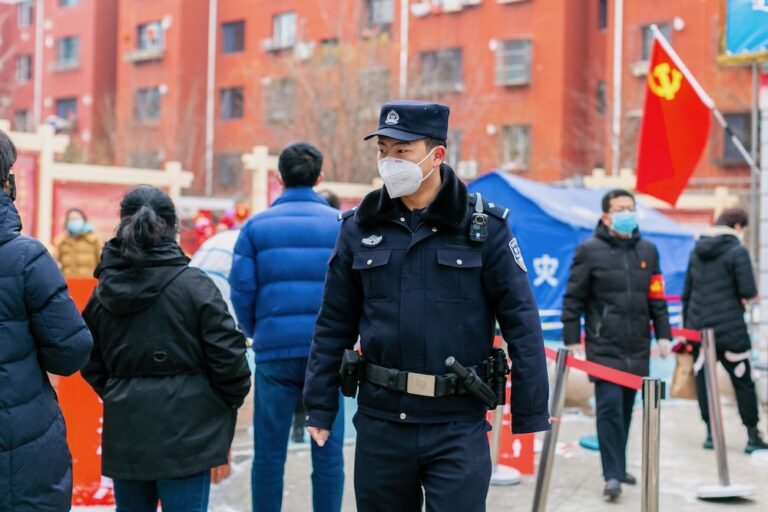(Freedom House/IFEX) – The following is a Freedom House press release: Freedom House: New Report Details China Censorship Mechanisms Repressive Model Relies on Elaborate Instruments of Control February 9, 2006 – Freedom House today released a special report that pinpoints the previously unknown mechanisms used by the Chinese authorities to muzzle its media. The report, […]
(Freedom House/IFEX) – The following is a Freedom House press release:
Freedom House: New Report Details China Censorship Mechanisms
Repressive Model Relies on Elaborate Instruments of Control
February 9, 2006 – Freedom House today released a special report that pinpoints the previously unknown mechanisms used by the Chinese authorities to muzzle its media.
The report, “Speak No Evil: Mass Media Control in Contemporary China,” (see: http://freedomhouse.org/uploads/special_report/33.pdf), presents a detailed account of the elaborate means by which the Chinese government successfully limits freedom of speech. It reveals how a system of control that originated under classic totalitarian conditions is being adjusted, refined and modernized to meet the current needs of the Chinese Communist Party’s (CCP) leadership. The report is available on Freedom House’s website.
The report, authored by Dr. Ashley Esarey, a professor at Middlebury College and an expert on Chinese media, is especially timely in light of a series of recent repressive measures taken by the regime to rein in journalists, news researchers and content on the Internet (see: http://freedomhouse.org/template.cfm?page=70&release=325).
“Beijing’s control of the Internet has been in the news lately, but it represents just one facet of an intricate system of restrictions on the free circulation of ideas in China,” said Jennifer Windsor, executive director of Freedom House. “The Chinese government is hoping to enjoy the benefits of the global economy without jeopardizing its political control.”
State control over the news media in China is achieved through a complex combination of party monitoring of news content, legal restrictions on journalists, and financial incentives for self-censorship.
The report explains how senior media managers appointed by the CCP are responsible for the news content of the media organizations they oversee – and how they are expected to censor content deemed unfavorable or divisive. These media managers’ career prospects depend on their effectiveness in producing media content that is both attractive to consumers and politically uncontroversial. Managers, editors and journalists’ salaries are determined in large part by the nature of the news they produce.
“What is particularly insidious about this model of control is its adaptability and its recognition of the modern market,” said Christopher Walker, Director of Studies at Freedom House. “The old system of control relied primarily on repression and direct censorship. The new Beijing model relies on carrots and sticks and increasingly on self-censorship”.
The report details, among other tools of control, the use of “propaganda circulars”, documents produced and disseminated by the CCP that contain specific instructions for the media nationwide. The primary function of these circulars is to identify stories that should not appear in news reports and provide guidance for treatment of certain sensitive stories.
The report also points out that the government’s control of the media may loosen with time. Creeping privatization through state subcontracting of private media enterprises may continue, and competition between local and national state-owned media organizations could encourage stories on a wider range of topics of interest to consumers. Most important, an increasing availability of information from abroad not subject to the elaborate system of state control, such as from the Internet and foreign media outlets, will remain a major challenge to the government.
In its 2005 survey of press freedom, Freedom House rated China as having a “Not Free” environment for the media, ranking it in 177th place out of a total of 194 countries. Freedom House also ranked China as “Not Free” in its most recent annual survey of political and civil rights, “Freedom in the World”.
Freedom House, an independent non-governmental organization that supports the expansion of freedom in the world, has monitored political rights and civil liberties in China since 1972 and press freedoms in China since 1980.
The report’s author, Ashley Esarey, is available for comment on the report and can be reached through Amanda Abrams at +1 202 747 7035.
Additional information about China is available online at:
Freedom of the Press 2005: China http://freedomhouse.org/template.cfm?page=16&year=2005&country=6715
or Freedom in the World 2005: China http://freedomhouse.org/template.cfm?page=22&year=2005&country=6715


